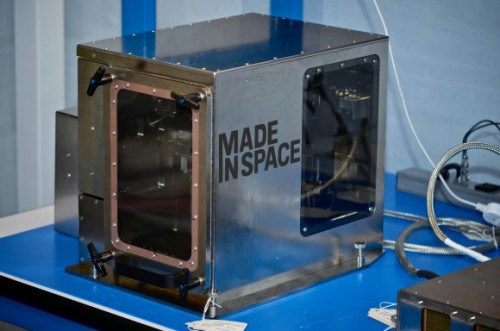A XNUMXD printer planned to arrive at the space station received approval from NASA this week and will arrive there earlier than expected. The next Dragon spacecraft, scheduled for launch in August, will carry the "Made In Space" printer on board.

A XNUMXD printer planned to arrive at the space station received approval from NASA this week and will arrive there earlier than expected. The next Dragon spacecraft, scheduled for launch in August, will carry the "Made In Space" printer on board.
"Passing the final test and transferring the hardware are significant milestones, but they will lead to an event of greater significance than the ability of every person on Earth to print objects on the International Space Station. This will be unprecedented access to space," said Made In Space CEO Aaron Kramer.
The device was supposed to fly on the Dragon flight after it, but recently it successfully passed vibration tests, and the degree of electromagnetic interference it could create, and was defined as having minimal risk.
The 21D printer will be the first of its kind in space. NASA has already printed some items on the ground and put them on the station to test how they will work on the station. At the station, Itav will initially print XNUMX demonstration components, mainly work tools.
The next step will be the demonstration of important components such as tools used by the crew, secondary hardware for payloads on the station and possible commercial applications such as components for cubesats (nano-satellites).” It was said in the announcement of the company Made In Space.
When the printer will operate at full capacity, it will be possible to reduce the need to send parts of the earth when they break down, this will save a lot of time, not to mention sending costs, the company said. The printer could also allow astronauts to produce new tools on demand when an unexpected event arises on the station.
Made In Space is not the only company that received permission from NASA to build a XNUMXD printer, the other company is Systems & Materials Research Cooperation which developed A printer that can make food for astronauts on the station.

5 תגובות
Not a populist activity at all,
XNUMXD printers allow flexibility and are a necessary tool wherever supply is problematic.
The American army, which has to be prepared to fight in places far from home, uses XNUMXD printers for ground forces and certainly also for submarines, so certainly space stations and spaceships should use XNUMXD printers.
The main question is how the XNUMXD printers will function in space and whether special adjustments must be made for them.
Herzl
In addition to what my father said - instead of a huge amount of spare components, a printer and a spool of material are enough...
Avi - do the math: if a levine weighs one ton, how much does the printer weigh plus the raw materials? At least two tons. A power source for the printer? Another ton. So the production of the satellite in space will cost much more because of the launch costs.
Another issue - a chip of 1X1X1 mm is produced in a foundry of 100X100X20 meters. So I'm sure there will be foundries in space, but not in the 21st century. ZA who might be able to produce very simple things but not a complete satellite.
Besides - I ordered 20D printed parts for the products already about XNUMX years ago, only then did they not make a media noise about it.
Herzl,
Think big. Think about the next step, where they will fly a huge printer into space, which will be able to produce printed satellites, when someone orders a satellite, without having to launch one satellite each time. A second, smaller printer will produce mission-adapted parts for those satellites, and here we have saved millions of dollars in launches...
A NASA propaganda activity designed to cover up the fact that no science is being done on the space station. Well, I agree that a minimal amount of real research is being done. The space station is a large-scale engineering experiment, but it is not clear what can be produced with a 3D printer that will be useful there.